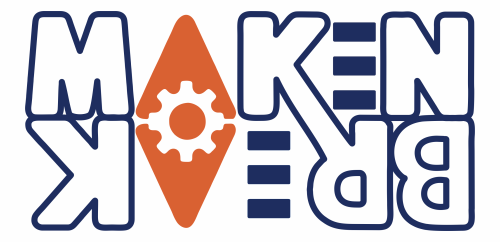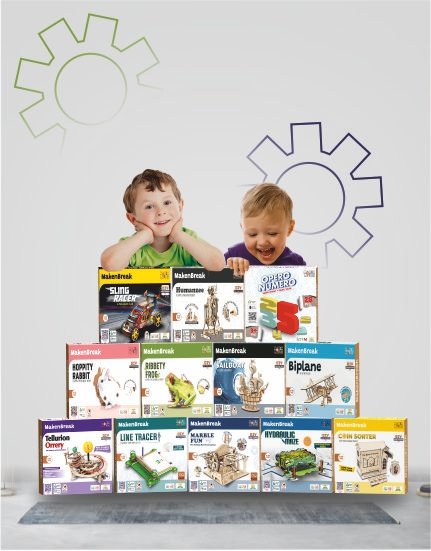How to use STEM education to inspire problem-solving, critical thinking and creativity skills.
In This Article
- The origins of STEM education
- STEM education, explained
- At what age should children be introduced to STEM learning?
- Benefits of STEM education on child development, from early childhood through teens.
- Why should parents prioritize STEM learning?
- 7 ways parents can introduce STEM in early childhood
STEM (that’s science, technology, engineering and math) is more than just a buzzy acronym. It’s an arena of education that has been shown to inspire critical thinking skills, encourage curiosity, improve cognitive thinking, enhance creativity and so much more. Here, we tap the expertise of educators who work in STEM-focused settings to answer questions on the benefits of STEM education and offer tips on how to introduce STEM learning in your home for your kids from their early childhood days.
The origins of STEM education
The use of the acronym “STEM” first came on the education scene in 2001, when Judith A. Ramaley, a former director of education and human resources at the National Science Foundation (NSF), used it to refer to science, technology, engineering and mathematics curriculum. The NSF led the charge for incorporating STEM education within the K-12 setting to not only inspire critical thinking and expand young minds, but to make students more marketable in the workforce whether or not they pursued a college education. Since 2001, STEM education has taken off and is offered at many schools around the world. And for good reason, says Karen Aronian, Ed.D, New-York based education design expert and founder of Aronian Education Design LLC.
“STEM delivers lifelong benefits for early childhood education,” says Dr. Aronian. “STEM activities, lessons and programs offer experiential learning that inspires curiosity, problem-solving, creativity and future innovators in science, technology, engineering and math.”
STEM education, explained
“At a basic level, STEM-based education is a hands-on approach to learning that incorporates science, technology, engineering and math. These disciplines often overlap, and they all emphasize the importance of problem-solving, collaboration, critical thinking and creativity,” says Sally Macaluso, a special education preschool teacher with a master’s degree in Curriculum & Instruction: Early Childhood Education.
STEM disciplines, defined
- S stands for science—the study of nature and the behavior of natural things through observations and experiments.
- T stands for technology—the creation and usage of tools, techniques and crafts to solve problems or serve a purpose in society.
- E stands for engineering—the art or science of applying the knowledge of pure sciences, such as physics or chemistry, as in constructing engines, bridges, buildings, mines, ships and chemical plants.
- M stands for mathematics—the science of structure, order and relation that has evolved from practices of counting, measuring and describing the shapes of objects. Mathematics deals with logical reasoning and quantitative calculation.
STEM education is broad-based and can incorporate practices like robotics, coding, woodworking, sewing, set design, computer-aided design (CAD), digital media and more.
At what age should children be introduced to STEM learning?
You can start sharing STEM concepts with your budding scientists as soon as you want to, advises Macaluso.
“Early childhood is a great time to introduce these concepts because young children are already innately curious,” says Macaluso. “Children begin to explore, observe and investigate the world around them starting in infancy. Parents and caregivers can use this natural curiosity to their advantage and incorporate STEM learning into everyday life.”
Benefits of STEM education on child development, from early childhood through teens.
The benefits of STEM education are abundant. Greg McDonough, the Innovation Space Director at Lake Forest Country Day School in Lake Forest, Ill., sees the curriculum in action on a daily basis, and notes how the STEM curriculum can reap benefits across the board in children, from improved cognition and memory to higher-level thinking, language development, social-emotional skills and more.
“It can even help boost a child’s confidence,” McDounough says.
In the early childhood age group, STEM education encourages work with various manipulative toys (think: dice, cubes, blocks and beads), aimed at helping children improve their hand-eye coordination and identify objects using their shapes, size, texture and colors.
“Manipulatives invite different methods of problem-solving that also increase resilience,” says McDonough. “Also, observing your children trying STEM-related tasks is a great way to measure and track developmental milestones.”
When it comes to older children, STEM education encourages creative thinking and real-life application of concepts, says McDonough, who cites the example of a fourth-grade math class at his school demonstrating their understanding of perimeter and area not by taking a test, but by designing and building a model house to scale out of cardboard.
As for teens, STEM education can help them tap into areas that they may follow in their careers transition into adulthood, says Macaluso.
“STEM education can greatly impact an individual student’s future success and society as a whole in an ever-changing world,” she says. “As we continually face complex global issues related to healthcare, the environment, technology, and infrastructure, there is a great need to fill current and future STEM jobs with knowledgeable and qualified workers.”
Why should parents prioritize STEM learning?
“Lifelong exposure to STEM education can positively impact a person’s future trajectory,” shares Macaluso. “Some research has shown that early exposure to STEM concepts is a predictor of future school achievement.”
Macaluso also emphasizes that the value of STEM education is long-lasting. “It equips children with the skills they need to be successful in and out of the classroom by laying the groundwork for complex thinking and problem-solving,” she says.
7 ways parents can introduce STEM in early childhood
Wondering how to introduce STEM education to your child? You can start now, with the help of these tips from Macaluso and McDonough.
- Create an open learning environment that welcomes questioning, brainstorming, investigations and failure.
- Ask open-ended questions to help children develop predictions and hypotheses when engaged in play, scientific explorations and even reading. They should also discuss whether these predictions are true once they learn new information or make additional observations.
- Try not to intervene immediately when children face problems or hiccups during exploration. Let them try their strategies and solutions first. This allows them to maintain effort, develop new ways of thinking and build their confidence.
- Set up a maker corner: allow kids to create with different materials. Cardboard boxes, Legos, extra tiles and Solo cups; any materials work as long as there is a wide variety. Encourage your child to spend time there and ask lots of questions about what they’re making. You can tailor the space to their interests as your child ages.
- After reading a picture book to your child, see if there are any problems the character faced that could be turned into a design challenge. You can ask questions like, “How would you get the billy goat across the bridge away from the troll?” Let your child come up with solutions and build prototypes of their ideas.
- Enroll your kids in STEM-focused preschools or classes (plenty of schools and summer courses tailor their curriculum to STEM—try searching “STEM schools near me.”)
- Get your kids comfortable with STEM concepts by having them help with everyday tasks like cooking, gardening, and home repair work. Or, work on a model of the actual job (i.e., using a MakeDo kit to attach cardboard pieces while an adult is using a screwdriver).
https://www.mother.ly/child/child-learn-play/how-to-introduce-stem-education/

